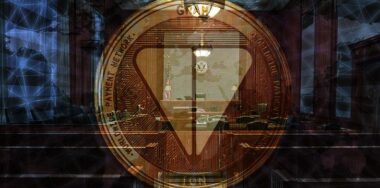Week two of the Trial of the Century is officially a wrap, and once again, we learned a lot about the early origins of Bitcoin and Satoshi Nakamoto from it.
Last week, we reported on how Florida lawyer Peter Tragos gave a fair, neutral, and informative assessment of how the first week of the Kleiman v Wright trial went. Tragos is back with another roundup of week two.
Kleiman v Wright week two: a quick recap
“This is unlike any other civil trial I’ve seen in America. The amount of the potential verdict keeps changing every day with the value of Bitcoin,” said the Lawyer You Know host Peter Tragos.
This trial will decide the fate of billions of dollars worth of Bitcoin for those who don’t know. Dr. Craig Wright mined these coins in the early days, and according to the plaintiff, Ira Kleiman, his brother David’s estate is entitled to some of these coins. He accuses Dr. Wright of fraudulently transferring hundreds of thousands of bitcoins and valuable intellectual property into his control after Dave Kleiman’s death.
But did it actually happen, and can the plaintiff prove it? Tragos once again gives his expert legal opinions on how the trial is going at what should be the midway point.
Jonathan Warren and Bitmessage
One of the deposition recordings was by Jonathan Warren, a computer scientist and the creator of Bitmessage.
One of the most potentially damning accusations against Dr. Wright is a series of Bitmessage interactions, which appear to be forged at first glance. The reason is that the messages are time stamped before Bitmessage’s official release.
However, during cross-examination, Warren admitted that he talked to Dr. Wright on Bitmessage before the official release. It’s not unreasonable to infer that Dr. Wright then began using the software to interact with others, including Dave Kleiman, before the general public knew about it.
As Tragos says in the video, saying that something could have been forged is not the same as proving it was forged. He points out that this is mere speculation.
Deborah Kobza and the nonprofit
Deborah Kobza was the second witness of the week to be deposed. She was the head of a nonprofit organization that worked with Dr. Wright as a consultant.
She accused Dr. Wright of filing for a $28 million license and signing on her behalf. However, as Tragos points out again, saying something is forged is very different from proving that Dr. Wright forged it.
“They’re trying to build this…Craig’s a bad guy. He forges stuff. He edits stuff. But no hard evidence that I’ve seen so far to prove he actually did that,” Tragos concludes.
Ramona Watts – Dr. Wright’s Wife
Ramona Watts is Dr. Wright’s wife. She testified that Dr. Wright never told her that he mined Bitcoin with Dave Kleiman and never told her they had a partnership.
Watts also talked about Dr. Wright’s Aspergers. “He’s literal beyond anything,” she told the court. Tragos believes this is important because it helps the jury understand why Dr. Wright can be difficult to pin down during testimony. He tends to correct people, refuses to answer questions unless they are precisely defined, etc. While this could look suspicious to an uninformed onlooker, with the context of someone having Asperger’s, this behavior looks very different.
Dr. Craig Wright – The Defendant
Tragos points out that the defendant can invoke his Fifth Amendment rights and refuse to testify or answer questions in a criminal case. However, that’s not the case in a civil trial. “While you can invoke your fifth amendment right in a civil trial, you can’t refuse to take the stand,” Tragos tells us.
“I thought it was really interesting. He would turn to the jury and explain things to them. He would also correct the plaintiff’s attorney if he would ask or say something that he thought was incorrect. He would also explain certain terms…that’s important. It shows his command, authority, and knowledge in this world.”
Tragos thinks this is important because one of the things the defense is arguing is that Dave Kleiman wasn’t capable of creating Bitcoin. However, some of the emails in which Dr. Wright refers to Kleiman’s coding ability as “OK” may contradict this.
Referring to the emails in which Dr. Wright referred to Dave Kleiman as his partner and told Ira Kleiman he might have some Bitcoin, Tragos said, “These ‘smoking guns’ were just conjecture and speculation. You have to take steps to say we need context. What kind of partnership? What did they do in that partnership? What did they own in that partnership? How was it split up? Why do we automatically think it was 50/50? All of this is important.”
Pointing out that the plaintiff might make the point that Dr. Wright could have done a lot more to help Dave Kleiman in his final days, given his financial resources and Dave’s lack of them, Tragos nonetheless reminds us that the communications between the two make it clear that they loved each other and were great friends. It’s also important to note that Dr. Wright has previously said Bitcoin may not have happened without Kleiman’s support as a friend, but that he had no formal role in creating it.
“Craig Wright’s testimony is evidence. What the lawyers are arguing and trying to intimate is not,” Tragos reminds us. “The emails are evidence, but they don’t have context, and Craig’s testimony gives them context that the jury can hold onto. That’s important.”
The best piece of evidence from the plaintiff so far
The plaintiff showed corporate documents that show Dave Kleiman transferring 573,500 bitcoins to Dr. Wright. Tragos believes this is the best piece of evidence the plaintiff has submitted so far and raises plenty of questions.
“That seems pretty damning. Especially when they put people on to say he forged documents and forged signatures. There is actually proof of that Bitcoin going from Dave Kleiman to Craig Wright,” Tragos says.
Tragos also noted that he found much of Dr. Wright’s testimony confusing. He mentioned that he doesn’t think the lawyers have done a great job of simplifying or streamlining it for the jury.
However, Tragos also points out that the defense will have some good arguments here. Why didn’t Dave Kleiman try to lay claim to some of these bitcoins if he was entitled to them? We’ve already seen that he was financially destitute in his final days, yet there’s no evidence at all to suggest he tried to get any of the 573,500 bitcoins back.
On top of this, we also have Dr. Wright’s explanation regarding the situation with the Australian Taxation Office (ATO). Dr. Wright claims that because of troubles with the ATO and them targeting him, he transferred the Bitcoin and some other assets to Dave Kleiman, who later transferred it back to him. “That’s his story, and he’s sticking to it, and Dave’s not here to say that’s not true,” Tragos says.
However, he also points out that this could backfire. In their closing argument, Tragos believes the plaintiff could argue that it’s not all conjecture and that they have documents, emails, and by Dr. Wright’s own admission, his willingness to move things around, finagle things, give money to people that isn’t theirs, and represent to the ATO that he doesn’t have it.
“He’s willing to do whatever it takes for him to come out on top,” Tragos says, hinting at the picture the plaintiff may paint to the jury. He believes this is the best argument the plaintiffs have in the case so far.
Punitive damages
Tragos points out that under normal circumstances in civil trials, it’s not permitted to get into a defendant’s finances and what assets they have. However, in this case, because potential punitive damages are on the cards, there has been a lot of digging into Dr. Wright’s financial picture.
The point of punitive damages is to punish the defendant. To do so, you have to know what they’re worth so that the damages hurt them. It’s no use to fine a billionaire $1,000, Tragos says by way of example because it won’t hurt them enough for them to care.
The overarching themes of the case
In the final part of the video, Tragos analyzes the overarching themes of the case so far. “There are tonnes of emails and documents being presented,” he says. These emails make it clear that Dave and Craig were friends, worked together, and maybe even partnered on some things.
“However, there’s not one official document making them partners or splitting this Bitcoin. In fact, out of all these emails…there’s only one back in March 2008 that even mentions Bitcoin,” Tragos reminds us.
He also tells us that in cases like these, the plaintiff has to make an argument as to why they should get the Bitcoin now that Dave Kleiman is dead. This may not be easy as all the evidence shows that Ira and Dave Kleiman were estranged and that Ira didn’t help him at the end of his life. The jurors could easily concede that there may have been a partnership, even if the evidence for it is weak, but that Dr. Wright deserves the Bitcoins in the end.
Check out all of the CoinGeek special reports on the Kleiman v Wright YouTube playlist.
New to blockchain? Check out CoinGeek’s Blockchain for Beginners section, the ultimate resource guide to learn more about blockchain technology.









